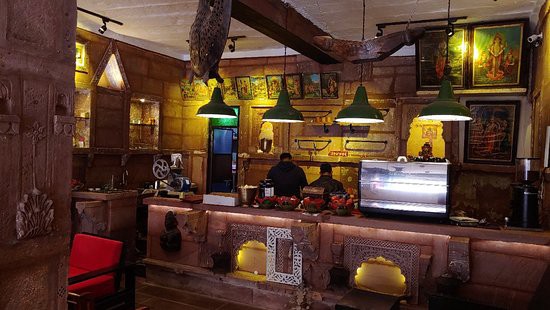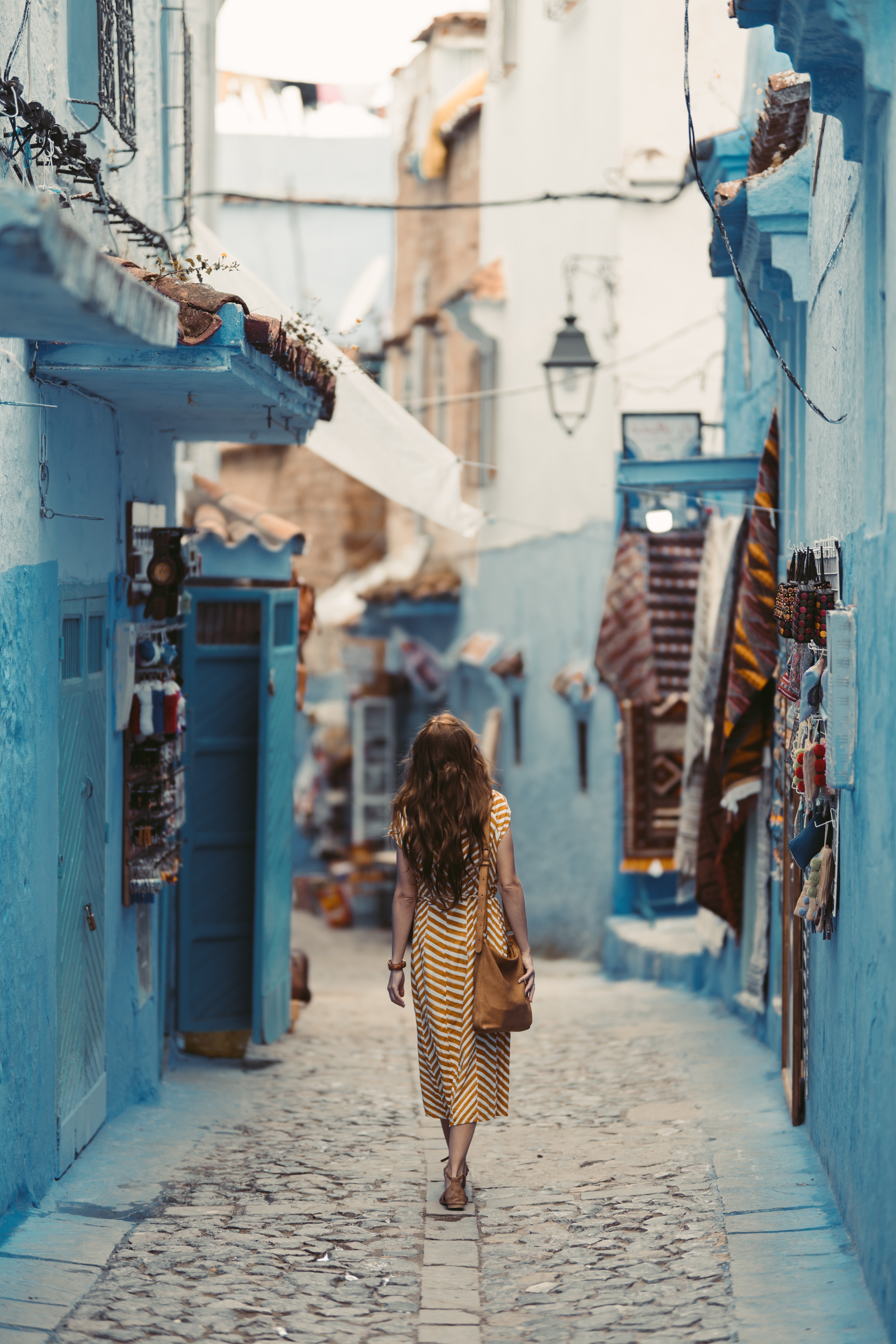Some say it is a journey in and a journey out.
When you go out and meet foreign, unknown places, you get to be more friendly with your own self. Not always, but an authentic travel experience always inculcates this idea. Especially when you get a taste of a new culture.
Bless our country, we have a new culture in every state.
the desert culture: Rajasthan
Rajasthan. A colorful land amidst soft brown sand. Be it in Jodhpur, Udaipur, Jaisalmer or Jaipur you can taste different delicacies of culture in this rich land.
The very name Raja (king) -sthan(place) symbolizes a place ruled by kings. All around you see some beautiful architectural heritage. Speaking of the victories, defeats, treachery or extravagance of kings of the old days. This is what drives travelers like us to jump in and have a taste of history.
When you enter Jodhpur, you realize its fame is greater than its size.
In every country or state around the world, you have a fine blend of the old and the new. Where people are floundering their way to the future, they always have a pair of eyes looking back with nostalgia. It’s a wonder how we feel the future will hold happiness but always tend to look back to relive the past.
Surprisingly, it is always the old that drives people towards it. The new is all the same. The old is what made a difference to the new.
Jodhpur might have entered 21st century but it still holds on to the charming lanes of history. The place is still governed to a large extent by Raja Gaj Singh. When you enter the old city, you can see lots of old shops. Many of these selling heavily embroidered sherwanis’, named after Jodhpur itself. Dresses in natural colors made with block prints. The city also boasts of a legacy of the sport Polo which was and is still played by the king and his family.
Travelling to this city, made me less of a fan, of the future.
the king of ‘SAMOSAS”: SHAHI SAMOSA
The sun had already set in and hunger compelled us to find an eatery. What was better than starting with the most famous one?? We did what every traveler does- Googled. We found a famous, must-do eatery called Shahi Samosa. We called an Uber and went for it. As our car came to a stop, so did our hearts. What on earth has driven so many people here? It must be something lip-smacking delicious right? So, we stood in the queue (Indian version of it) while trying to help other foreign nationals (who were having a hard time), have their order first. We finally got a samosa and the traditional Mirchi bada wrapped in a piece of newspaper. We ate while trying to judge the taste vis a vis the overwhelming crowd.

Sometimes, places pull you towards it. Specially if they have a voluptuous belly filled with memories.
It was not the taste that drove people but the legacy associated with it that dated back to 1984. People wanted to taste the history and not the samosa. Which by the way was an average.
Without realizing what lies ahead, we strolled around after having our samosa and soon entered the old city.
When you enter the old city area of Jodhpur, the majestic, symbolic blue city; you can feel history under your feet. If you ask where jodhpur is, here in these old, blue-colored cemented simple buildings.

Lying close to the clock tower, this area comprises of narrow streets winding up and down to criss cross paths.
Soon our eyes met a fort, kept high above the hills. As if guarding the whole area, which we later knew as Mehrangarh fort; and like following a ghost in the shades of the night, we followed its image.

THE RUSTIC CAFE: SAM’S ART CAFE
We could make out the difference between this area and the rest of Jodhpur. The place felt like an old woman with a bony structure and a sagging skin. But she was smiling from her lips dipped in red lipstick and her eyes having the charm of a young women full of love. Though the area had remnant’s of old age, they were brushed up to live with the new. People had rented these architectural marvels and made hotels in them.
This is the core, where the seed lies. Even foreigners don’t shy away from wearing shades of indigo, mustard and other fabrics with block prints. Harems, lungis, palazzos for pants and bright colored scarfs’ wrapped around their neck. Just trying to merge with the surrounding. Rather than seeming to stand out.
When you enter such a place you want to take it all in. What is better than a cup of coffee?
Walking through the lane, Sam’s Art Café struck our attention. It was an art gallery cum café. Like a dungeon filled with relics of the past.

Inside Sam’s art cafe. Image source: Trip advisor
Everything inside smelled history accept the smell of a fresh brewed coffee. It was like going back in time with a cup in your hand. The owner, a native Marwari was a great talker. Everyone here was. He loved history and sought to keep the place untouched. Rather he dressed it with some old memories to fit in with the place. Dust laden bells, rustic swords, metal figurines, brass pieces and whatnot. The place was beside the heritage monument Toorji ka Jhalra. A stepwell, built in the 1740s giving it a perfect setting.
After having a hot cup of cappuccino sprinkled with Hazelnut, we were back on foot.
RESTAURANT IN A FORT: jHANKAR hAVELI
As we walked down the lane, we saw many boutique shops. The traditional block printing was used to create some latest fashion dresses in small shops, with artifacts around.
You can roam the lanes and not feel tired. No, it’s not too big a place. But a small quagmire that always brings you back at the same place. After getting lost for a while, we looked for a place to dine. It was called Jhankar choti Haveli. A dim-lit place, where sand met your feet and domes met your head and you sit in the middle. A house with 2 courtyards where somebody in the past must have lived. They would have sat on the floor and made chapati’s in an earthen oven. And here we were sitting amongst its memories, and trying to figure out how it must have been. We ordered the usual, dal and roti, though it never tasted better before. On every table were people from all over the world. You could hear different languages, gestures and choice of meals. Everybody taking this history in together.

Inside Jhankar choti Haveli. Source: Foursquare
As a traveler, you are bound to make mistakes. You are new to a place and sometimes even online sites deceive you. Our hotel fell far from this place, almost outside the city. We felt cheated when we saw foreigners living and sleeping under the old canopies. Watching the sunset and rise from old metal barred windows. We had no choice because we had pre-booked. But we only went to sleep there. Every other day, this place called us back, for yet more memories to take back with us.
AUTHENTIC FOOD IN A MODERN SETTING: gYPSY RESTAURANT
We visited many historical places, after all, we were in blue city. From the steep Mehrangarh fort, to the peaceful Jaswant Thada, to the majestic Umaid Bhawan. Each had a story, written by some who had been successful in making a place in history. We heard it all, felt the old buildings come to life but soon forgot the overwhelming flow of history. What was left to us is how we felt there.
When history overwhelmed us, we wanted to go to the new part of Jodhpur. We hired an autorickshaw and chose to knock at yet another restaurant known for its delicious food. It was called Gypsy restaurant.

This one promised authentic Rajasthani taste but in a new setting. We had to wait 20 minutes like all others before entering the place. While people ate Punjabi, Sindhi, Jain cuisines, we went for Marwari. A platter called Kadi sogra. It comprised of Bajra roti, kadi, lehsun chutney, bajra ka halwa and gatte ki sabzi. To heighten our experience, we ordered another signature of the place, Makhania Lassi. This was a sweet lassi dressed in Kesar with white butter placed on top. After you have it all, you just need nothing but sleep. We ate Jodhpur and it was heavy for our Delhi-belly.
We had our stomach full and a satisfaction on our hearts. But our guts made us realize something.
We ate an authentic meal in a non-authentic restaurant. But all this while we were eating non-authentic meals in authentic restaurants AND WE REALIZED THAT It makes a huge difference.
Which one do you prefer is a personal choice! You either eat tradition or feel it. You taste it or see it. There was a dilemma in it, but the pull of tradition was harder for us.
BACK TO THE OLD LANES: mAN CAVE
It was a special day and we wanted to drink. Like any other wish, the old city, wanted to grant us this one too. We saw a rooftop bar; it was called Man Cave. Yes, we did think it must be a place where men might come together over drinks. But since we have entered 21st century, so surely females were allowed everywhere. As we reached the 2nd floor of the café, we saw a breathtaking view. We could sit here have a sip of Cosmopolitan while we gazed upon the Mehrangarh fort. Two native Marwari young men were singing English songs. The whole setting was jumbled up. An outsider wouldn’t make out whether he was in the 17th century or 21st.
Our experience made us realize, no matter how ‘new’ we become, we always crave for the old. We want new ideas, development, future but somewhere inside we have a deeply engraved love for history. We want coffee but while sitting among the dusty relics of the past. We prefer pasta but what if it came in a plate made of brass? We want music, but what if the musician sings amongst a view of a high hilled fort? We might have our foot in the future, but our hearts still beat for a taste of history.
Are you a history buff like me ?I would love to know more in the comments below.

Would love to have you back!


Reblogged this on CocoonedInCuriosity.
LikeLike